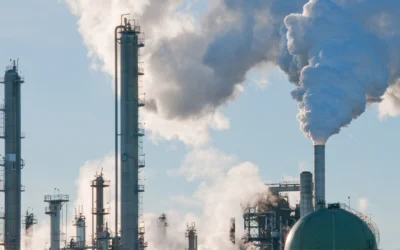What is Sustainable Production?
Exploring Fundamentals and Future Impact
But what is sustainable production? How does it impact our future, and what are the methods driving its progress?
Here we bring our experts insights from the sustainable community on to the table to reveal the fundamentals of sustainable production and explore the future implications of this crucial approach to manufacturing.
Understanding Sustainable Production
The essence of sustainable production is not just about reducing harm; it’s about creating positive impacts. This means rethinking how we design, produce, and consume products to ensure we don’t compromise the ability of future generations to meet their needs.
The Fundamentals of Sustainable Production
Let’s break down some key areas:
Resource Efficiency:
Think about using fewer resources to produce the same number of products.
Resource efficiency is the strategic use of environmentally scarce resources to maximize productivity while minimizing waste and environmental impact. It involves optimizing processes to use less raw material, energy, and water, thereby reducing costs and conserving natural resources.
According to an article in RISE, ‘Sustainable manufacturing methods can include printed electronics, allow for more customized production and flexible design, significantly reducing material waste.’
Source: RISE
Cleaner Production:
Cleaner production is a proactive approach to environmental management that focuses on reducing pollution and waste at the source rather than dealing with it after it has been created. Engineering and manufacturing companies like us, have a chance to minimize their environmental footprint by:
- using non-toxic raw materials
- using solar energy at production sites
- having global reach to nearshore production
- manufacturing products closer to key markets
- enhancing energy efficiency
- recycling waste products back into the production cycle
Circular Economy:
Circular production is an innovative, sustainable business practice that aims to eliminate waste and keep resources in use for as long as possible. Unlike the traditional linear model of “take-make-dispose,” circular production focuses on designing products that can be reused, refurbished, or recycled back into the production process.
As Robert Metzke, Head of Sustainability at Philips, aptly puts it, “Embedding circularity in our core strategy and all businesses, markets, and functions helped us to connect many initially independent initiatives, scale best practices, and reap the economic benefits of circularity from pilots to impact” (World Economic Forum).
Sustainable Supply Chains:
Ensure that every part of your supply chain adheres to sustainability principles, from raw materials to the final product. This can include:
- ethical sourcing
- fair labour practices
- reducing carbon footprints
Take your sustainable efforts one step ahead by checking on your partners in the supply chain. To help you understand whether greener work methods is their priority, perform the following checks:
- ISO 13481 certifications
- A clear sustainability/ESG roadmap with clear emissions reduction targets.
- Compliance with industry bodies like the RBA.
Innovative Sustainable Production Methods:
New technologies and practices enhance production sustainability. Advanced manufacturing technologies like 3D printing and AI are set to revolutionize production processes, making them more efficient and less wasteful.
Take a deeper look at your manufacturing processes and find loopholes where sustainable methods can work their magic. Doing this can take you a lot farther in terms of financial growth and market-position longevity than you would have thought.
Finally, to conclude this section, a thought to carry with you:
The Financial Times notes that integrating Industry 4.0 technologies is crucial for advancing sustainable manufacturing practices.
Industry 4.0, characterized by the fusion of physical and digital technologies, drives significant improvements in production sustainability. By leveraging AI, manufacturers can optimize production schedules, predict maintenance needs, and reduce downtime, leading to more efficient use of resources.
Real-World Examples of Sustainable Production
To make it more real and inspirational, let’s look at some companies implementing clear sustainable production strategies:
- Interface: This flooring company aims to have zero environmental footprint by 2020. They recycle old carpets to make new ones, reducing waste significantly. (Source)
- Tesla: Tesla’s Gigafactory aims to be the world’s largest building powered by renewable energy, using solar power and recycling batteries. (Source)
- Unilever: Unilever’s Sustainable Living Plan aims to reduce its environmental impact while improving health and well-being for more than a billion people by 2020. They’ve achieved significant reductions in greenhouse gas emissions, water use, and waste. (Source)
The Future Impact of Sustainable Production
Looking ahead, the future of sustainable production holds immense promise for manufacturers like you and us. Here are some trends and innovations that you should watch for:
Advanced Manufacturing Technologies:
Technologies like 3D printing, AI, and IoT are transforming the landscape of research and development (R&D) and prototyping, making these processes more efficient and less wasteful. For instance, additive manufacturing (3D printing) allows for rapid prototyping, enabling designers to quickly create and test multiple iterations of a product. This technology can reduce material waste by up to 90% compared to traditional methods, significantly lowering costs and environmental impact.
Renewable Energy Integration:
More manufacturers are integrating renewable energy sources into their production processes. Solar, wind, and bioenergy are becoming mainstream, reducing reliance on fossil fuels and cutting greenhouse gas emissions.
Sustainable Production Metrics:
As the need for accountability grows, so does the importance of metrics to measure sustainable production. Tools like life cycle assessment (LCA) and carbon footprint analysis will become standard in evaluating environmental impact.
Consumer Demand:
Consumers are increasingly demanding sustainable products. According to a Nielsen report, 73% of global consumers say they would or probably change their consumption habits to reduce their environmental impact. (Source: Neilson.com/ What sustainability means today)
Policy and Regulation:
Governments worldwide are enacting stricter environmental regulations, pushing companies to adopt sustainable practices. The European Green Deal aims to make Europe the first climate-neutral continent by 2050.
Sustainable production is more than a trend; it’s a necessity for the future of our planet. By understanding the fundamentals and future impact of this concept, we can see the crucial role it plays in ensuring a sustainable and prosperous future.
Companies like Intretech are leading the way with innovative sustainable production methods, demonstrating that sustainability and profitability can go hand in hand.
As we move forward, embracing sustainable manufacturing practices will not only benefit the environment but also enhance economic growth and improve the quality of life for all.
Explore more related content
Understanding Scope 1, 2, 3 Emissions and how they affect production
Understanding Scope 1, 2, 3 Emissions and how they affect productionIt is essential to understand the differences...
Air Purifiers and Electricity Usage: Do They Break the Bank?
Optimising Energy Efficiency in Air Purifiers: Engineering and Procurement StrategiesThe design and production of...
Sustainable Farming Solutions: How Agrotech is Driving Environmental Change
Sustainable Farming Solutions: How Agrotech is Driving Environmental ChangeThe global push toward sustainability has...






